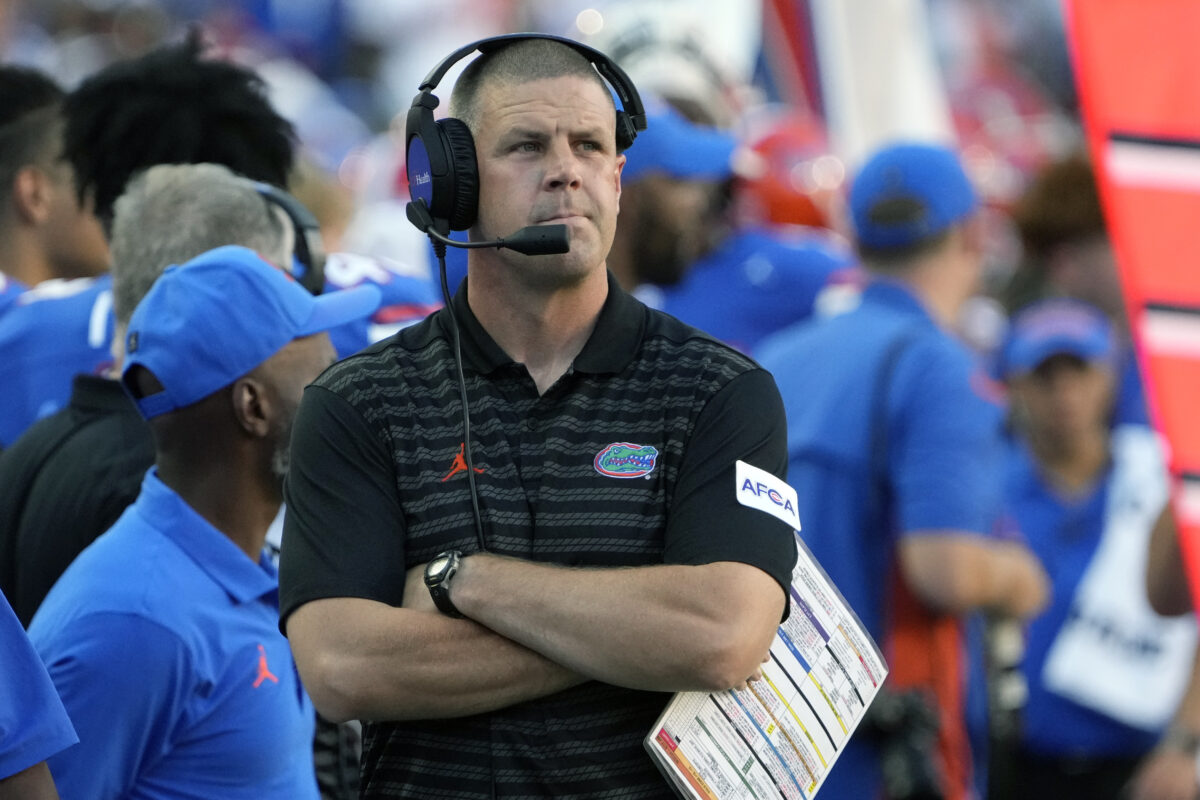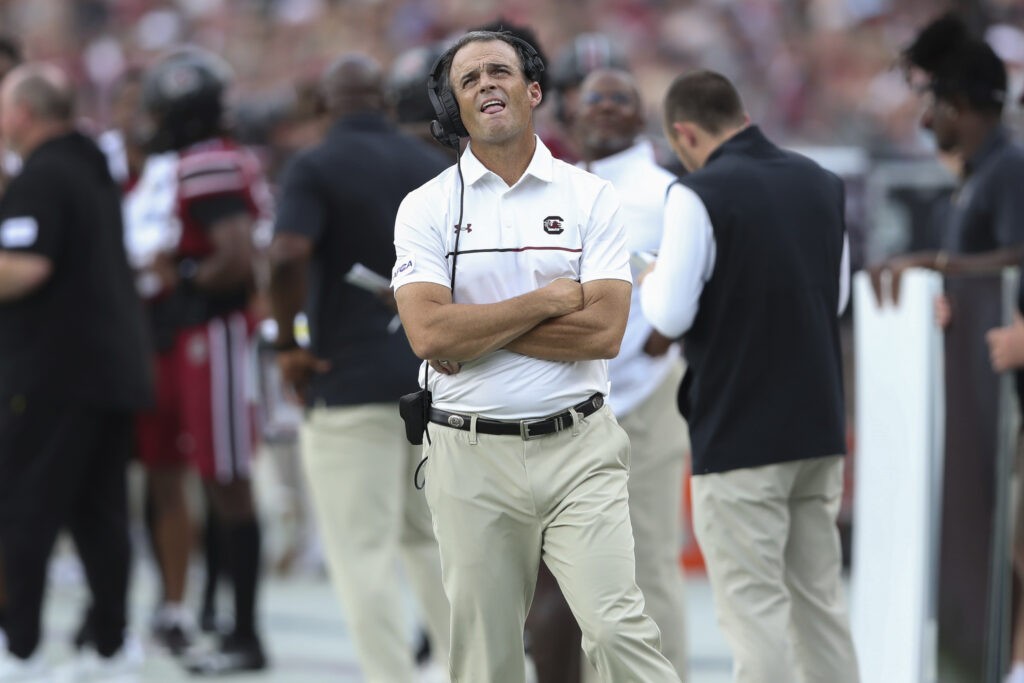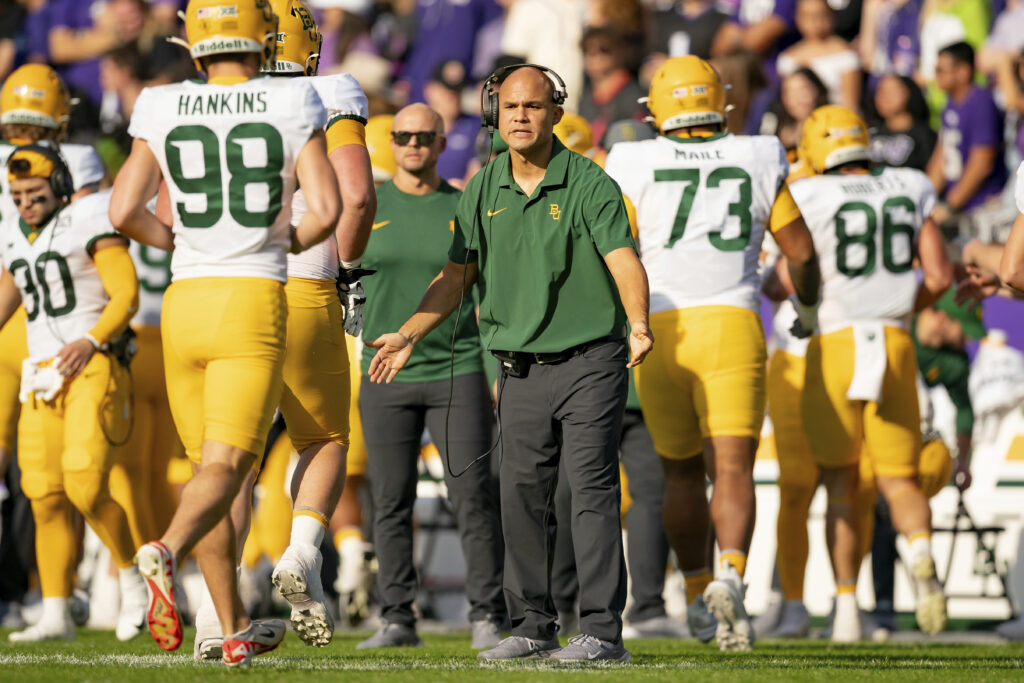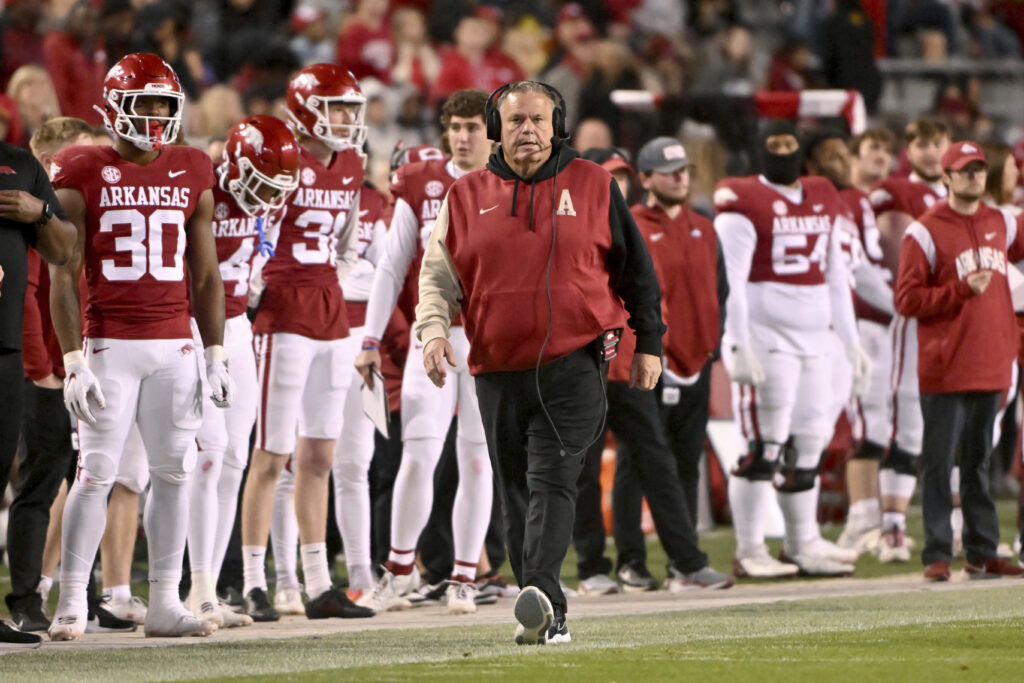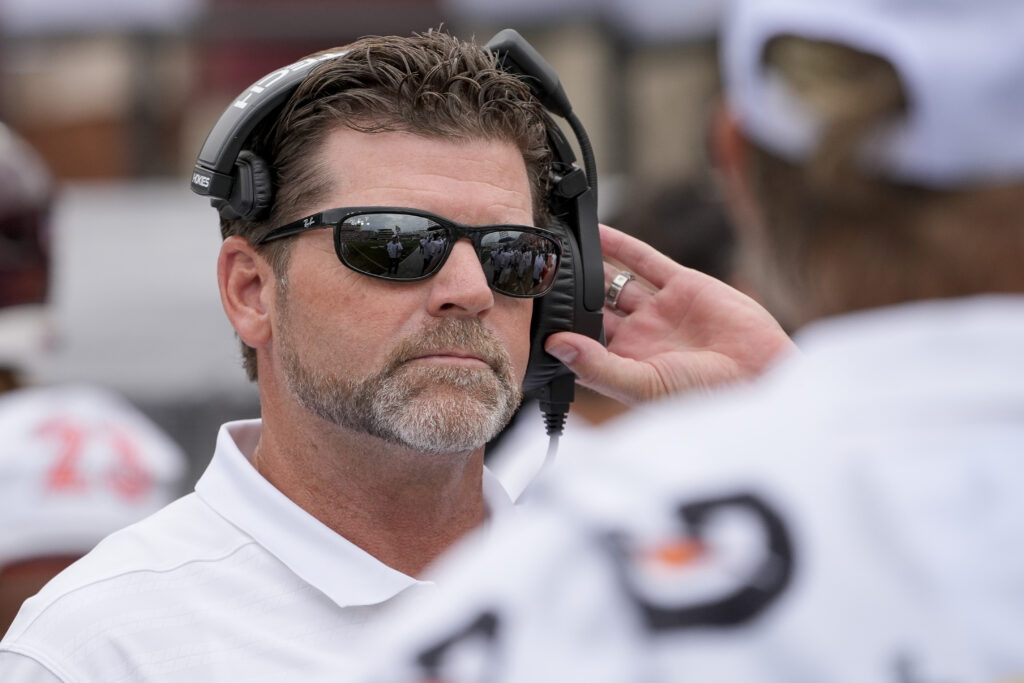Blog Article
Virginia Tech Football: The Make-or-Break Season Ahead
Virginia Tech football stands at a crossroads.
After a mediocre 6-6 campaign in 2024 culminating in a Duke’s Mayo Bowl appearance against Minnesota, the Hokies enter 2025 with their entire program trajectory hanging in the balance. Head coach Brent Pry finds himself squarely on the hot seat with a 16-21 record over three seasons, while significant roster turnover and a revamped coaching staff add further layers of uncertainty.
The question on everyone’s mind isn’t just whether Virginia Tech can improve—it’s whether this proud program can reclaim its position among college football’s relevant powers.
The 2024 Season: Opportunities Squandered
Virginia Tech’s 2024 season was defined by moments they’d rather forget.
The Hokies stumbled out of the gate with a painful 34-27 loss at Vanderbilt and later dropped another winnable non-conference game against Rutgers 26-23. One-score games became their nemesis, with the team losing five such contests including a particularly controversial defeat at Miami that left the fan base fuming.
Despite the disappointment, several individual performances stood out:
- Running back Bhayshul Tuten emerged as the offensive centerpiece, rushing for an impressive 1,159 yards and scoring 15 touchdowns while averaging a robust 4.7 yards per carry.
- Edge rusher Antwaun Powell-Ryland dominated defensively, recording 16 sacks and consistently disrupting opposing backfields.
- Kicker John Love demonstrated remarkable accuracy by converting 16 of 18 field goal attempts and maintaining perfection on extra points.
- Quarterback Kyron Drones showed flashes of brilliance, completing 136 of 224 passes for 1,562 yards and 10 touchdowns.
These individual bright spots couldn’t mask a team that averaged 189.4 passing yards per game and struggled with defensive consistency, allowing 215.9 passing yards per contest.
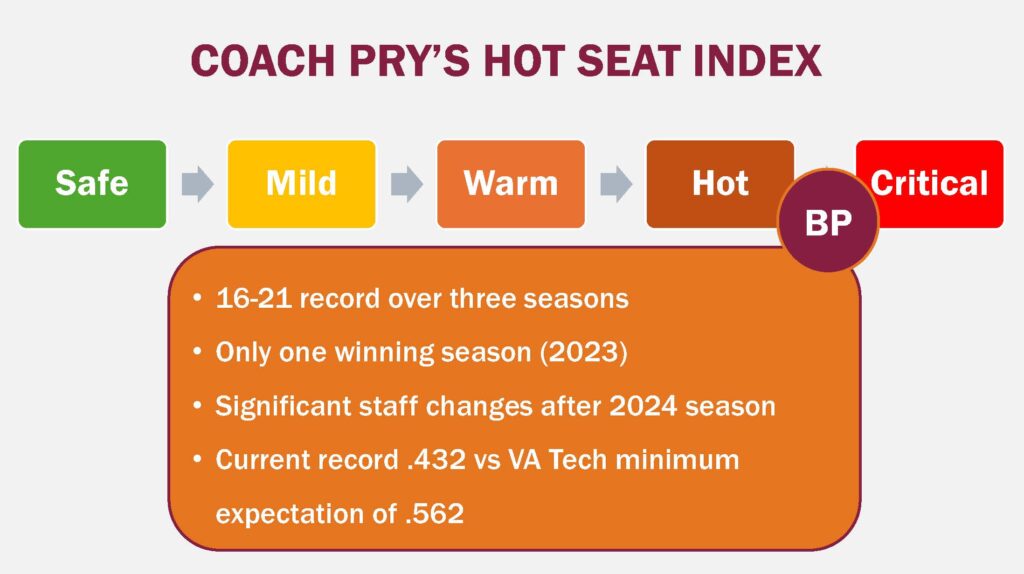
The Coaching Overhaul: Pry’s Last Stand?
Brent Pry has pushed his chips to the center of the table.
Following the underwhelming 2024 campaign, Pry made decisive and necessary changes to his coaching staff. Gone are defensive coordinator Chris Marve, offensive line coach Ron Crook, and senior director of strength and conditioning Dwight Galt IV—all casualties of a season that failed to meet expectations.
Their replacements represent Pry’s final attempt at building a staff capable of saving his job:
- Philip Montgomery arrives as offensive coordinator, bringing a track record of explosive offenses from his time at Baylor and Tulsa.
- Sam Siefkes takes over defensive coordinator duties, implementing new tactical approaches to shore up a unit that allowed 215.9 passing yards per game in 2024.
- Both coordinators must deliver immediate results to silence prominent analysts like ESPN’s Adam Rittenberg and The Athletic’s Andy Staples, who have explicitly identified Pry as a coach whose job security hangs by a thread.
With the countdown officially underway, Pry’s fate will depend on whether these new voices can translate to on-field success.
The Transfer Portal: A Two-Way Street
The transfer portal era has fundamentally reshaped college football roster management, and Virginia Tech felt its full impact.

With over 30 new players entering the program while numerous contributors from 2024 sought opportunities elsewhere, the Hokies are essentially fielding a new team. The exodus of talent created significant voids:
- The offensive backfield loses Bhayshul Tuten, whose production (1,159 yards, 15 touchdowns) served as the engine of an offense that averaged 178.4 yards per game on the ground.
- The defensive front must replace stalwarts like Antwaun Powell-Ryland (16 sacks) and Aeneas Peebles (All-American Third Team).
- Additional departures include cornerback Jalen Stroman, linebacker Keli Lawson, and offensive lineman Xavier Chaplin (Auburn), creating depth concerns across multiple position groups.
To counter these losses, the Hokies aggressively pursued transfer talent:
- Cameron Seldon (Tennessee) arrives as a versatile weapon capable of contributing at both running back and receiver.
- Running back reinforcements include Braydon Bennett (Coastal Carolina), Terion Stewart (Bowling Green), and Marcellous Hawkins (Division II).
- The defensive front adds Ben Bell (Texas State), Arias Nash (Mercer All-SoCon Second-Team), and Jahzari Priester.
- Secondary help comes via safety Sherrod Covil Jr. (Clemson) and defensive back Isaiah Brown-Murray (East Carolina).
How quickly this rebuilt roster can develop chemistry may ultimately determine Virginia Tech’s ceiling in 2025.
Position-by-Position: Areas of Strength and Concern
The quarterback position represents a rare island of stability.
Kyron Drones returns after an up-and-down 2024 campaign that showed flashes of brilliance amid consistency issues. His dual-threat capabilities (completing 136 of 224 passes for 1,562 yards and 10 touchdowns, while also being a running threat) give Philip Montgomery an intriguing centerpiece around which to build his offense.
William “Pop” Watson III also returns, providing experienced depth and competition after completing 34 of 58 passes for 481 yards and a touchdown in limited action last season. The quarterback room’s development under Montgomery’s tutelage will be crucial to elevating an offense that struggled with passing consistency in 2024, averaging just 189.4 yards per game through the air with a 59% completion rate.
Beyond quarterback, uncertainty reigns:
- Running Back: The competition between transfers Stewart, Bennett, and Hawkins should be one of fall camp’s most closely watched battles, with Cameron Seldon’s versatility adding another dimension.
- Wide Receiver: Young talent like Takye Heath, Keylen Adams, and Chanz Wiggins offers promise but limited experience. Montgomery’s system typically features significant receiver involvement, making this group’s development essential.
- Defensive Line: Following the departures of Powell-Ryland and Peebles, the defensive line will be completely rebuilt. Transfers Nash, Priester, and Bell must have an immediate impact, particularly in the pass rush.
- Secondary: After allowing nearly 216 passing yards per game in 2024, Covil and Brown-Murray additions add importance for a unit that must create more turnovers after finishing 2024 with a negative turnover margin.
The marriage between new personnel and new schemes will define Virginia Tech’s 2025 campaign.
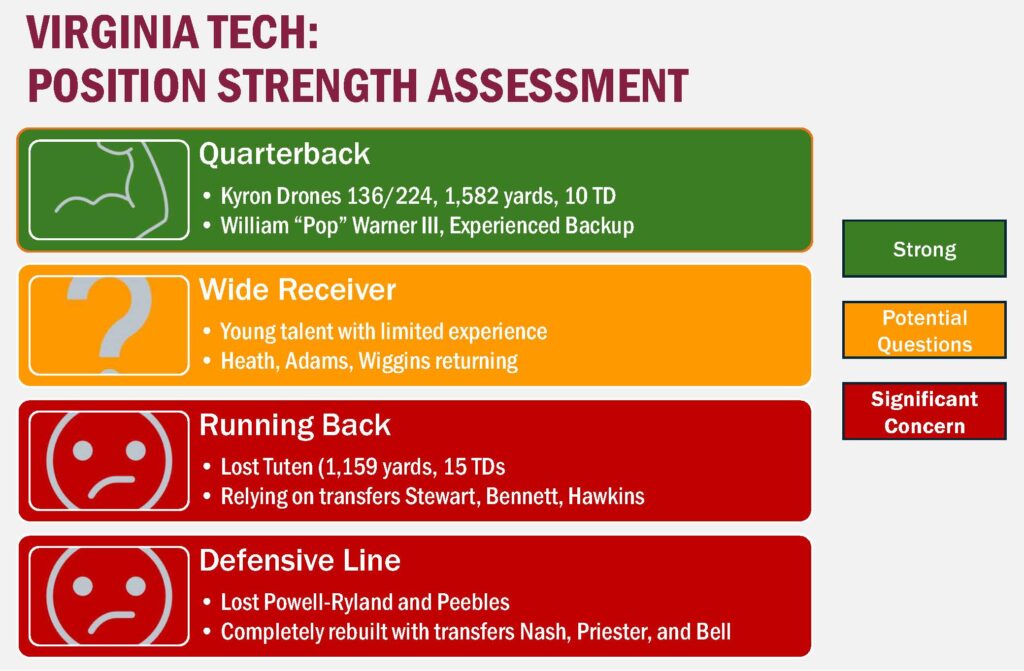
The Schedule Gauntlet: No Room for Early Stumbles
Virginia Tech’s path to improvement doesn’t come with any warmup period.
The Hokies open with consecutive games against SEC opposition, setting a challenging tone for the season. This mirrors their 2024 start when they opened with a disappointing 34-27 loss at Vanderbilt that set the stage for early-season struggles. The upcoming ACC slate features traditional rivals and emerging powers, creating few opportunities for reprieve, especially after going 2-2 against non-conference opponents last season.
Analysts have offered mixed projections:
- Some forecast a modest improvement to 7-5
- Others anticipate another 6-6 finish
- Most agree that anything less than six wins could trigger significant changes in Blacksburg.
The margin between progress and regression appears razor-thin.
The Defining Factors: Five Keys to Success
Several critical elements will determine whether 2025 becomes a turning point or just another chapter of continued stagnation.
- Offensive Evolution: Philip Montgomery’s impact on the offense, particularly in developing a more consistent passing attack to complement the running game, could transform the Hokies’ scoring potential.
- Defensive Identity: How quickly Sam Siefkes can implement his system and develop cohesion among a unit featuring numerous new faces will be critical to the team’s overall success.
- Transfer Integration: With so many roster additions via the transfer portal, team chemistry and rapid assimilation will be essential, especially during early-season challenges.
- Close-Game Execution: After struggling in one-score games in 2024, improving late-game situations could be the difference between bowl eligibility and a losing record.
- Coaching Stability: The pressure on Pry and his revamped staff creates urgency and uncertainty. How the staff handles this pressure will set the tone for player performance.
For Virginia Tech, 2025 represents more than just another season—it’s a referendum on the program’s direction under Brent Pry’s leadership.

With significant changes in personnel and coaching philosophy, the Hokies have embraced transformation in pursuit of returning to their former prominence. While the challenges are substantial—from replacing departed stars to navigating a difficult schedule—there’s cautious optimism in Blacksburg that the infusion of transfer talent coupled with strategic coaching changes provides a pathway to improvement.
As Lane Stadium prepares to echo once again with “Enter Sandman,” the stakes couldn’t be higher.




